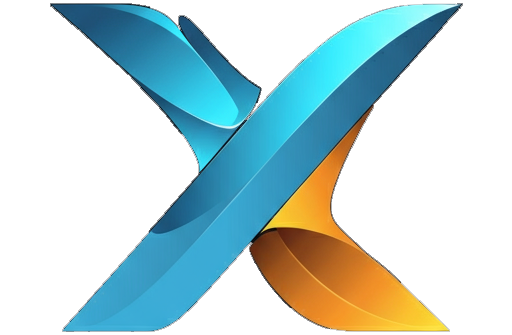In the ever-evolving digital landscape, content creators have consistently adapted to changing trends and platform updates. However, recent years have highlighted a pressing issue: the decline in content creator revenue. This shift has not only impacted the livelihoods of countless individuals but has also brought to light underlying challenges within the industry. With audiences becoming more fragmented and platforms prioritizing new revenue models, understanding this phenomenon is more critical than ever. Beyond just financial concerns, this issue represents a transformative phase in the creator economy, one that demands innovative thinking and resilient strategies to overcome.
Historical Perspective: Growth and Plateau
The rise of digital content creation dates back to the early days of blogging and video platforms like YouTube. These early adopters thrived on advertisement revenues and brand sponsorships. By the mid-2010s, the creator economy experienced a golden age, marked by widespread influencer culture and rapid platform innovation. But as the market matured, growth began to plateau. Ad saturation, algorithmic changes, and increasing competition have now led to dwindling returns for many creators.
During this golden age, creators enjoyed a sense of stability rarely seen in emerging industries. Platforms invested heavily in user engagement, advertising incentives flourished, and creators became household names. However, as the industry shifted toward scalability and profitability, cracks began to appear. The meteoric rise of new creators further fragmented audiences, complicating income streams and leading to oversaturation in niche markets.
Key Factors Driving Revenue Decline
Algorithmic Changes
Social media platforms continually tweak their algorithms to enhance user experience. While these updates often aim to prioritize quality content, they can significantly impact visibility for creators. A shift away from organic reach toward paid promotion models forces creators to spend more for audience retention without guaranteed returns. Over time, these algorithmic decisions have bred mistrust among creators, who often feel left at the mercy of opaque and ever-changing systems.
Audience Fatigue
Audiences today are inundated with content. The sheer volume makes it challenging for creators to maintain consistent engagement. Furthermore, changing audience preferences mean creators must adapt rapidly or risk losing relevance. Fatigue also sets in when viewers perceive repetitive themes or overly commercialized content. Consumers now prioritize authenticity and meaningful connections, leaving creators to balance professionalism with relatability in their content output.
Monetization Policies
Over the past few years, changes in monetization policies across platforms like YouTube, Instagram, and Twitch have directly influenced creator earnings. Demonetization due to policy violations, stricter content guidelines, and revenue cuts in ad-sharing arrangements have collectively tightened creators’ profit margins. Additionally, creators are navigating more stringent ad suitability requirements, which can disproportionately impact sensitive or niche topics. As policies become more conservative, creative freedom and revenue potential diminish.
Platform-Specific Insights
YouTube
YouTube, a pioneer of the creator economy, has long been a staple for video content monetization. However, demonetization controversies, stricter content guidelines, and an increased focus on ad-friendly material have disrupted creators’ revenue streams. While YouTube Premium offers an additional income layer, its adoption remains limited compared to traditional ad revenue. Furthermore, newer monetization tools such as Super Chat and channel memberships require active engagement and cater only to a creator’s most loyal base, leaving casual followers disengaged.
Instagram and TikTok
Visual platforms like Instagram and TikTok initially offered creators vast reach and brand collaboration opportunities. But algorithmic biases favoring newer trends often push established creators into the background. Additionally, sponsored post rates have stagnated as brands look for alternative micro-influencers to maximize ROI. Beyond ad limitations, these platforms face criticism for their short content lifespans, making it harder for creators to produce sustainable streams of income while juggling high production demands.
Twitch
Twitch provides a different perspective with its reliance on viewer subscriptions and donations. While it offers a more direct revenue channel, increasing platform fees and competitive saturation have hindered creators from achieving substantial growth. Live streaming’s demanding format exacerbates burnout and increases dependency on unpredictable audience generosity, making it an unreliable sole income source for many.
The Role of Economic Shifts
Global economic challenges, including inflation and shifts in advertiser budgets, directly affect creator revenue. Brands have become more cautious in allocating funds for influencer partnerships, leading to fewer opportunities for creators to monetize through sponsorships. This broader economic tightening coincides with increased production costs, requiring creators to invest more resources for diminishing returns. Creators must navigate not only industry shifts but also the broader financial struggles affecting their target audiences.
Emerging Trends in Content Monetization
Diversified Revenue Streams
Successful creators are now focusing on diversified income sources. From launching merchandise lines to hosting exclusive membership programs through platforms like Patreon, diversification helps mitigate risks tied to platform dependency. Workshops, e-books, and digital courses are further enabling creators to turn their expertise into tangible products, broadening their market reach and deepening audience engagement. Building a multidimensional brand has become essential for sustainability.
Direct-to-Audience Models
Direct monetization through exclusive content and tiered memberships is growing in popularity. Platforms like Substack and OnlyFans allow creators to earn directly from their most loyal fans, reducing reliance on ad revenue. Subscription tiers, particularly those with personal touches like one-on-one coaching sessions, have proven effective at not only generating income but also fostering a deeper creator-audience connection.
Leveraging Technology
AI and blockchain technologies offer innovative ways for creators to monetize. For instance, NFTs (non-fungible tokens) enable digital artists and creators to sell unique content directly to audiences. While these technologies are still in early adoption stages, their potential for high-value transactions cannot be overlooked. Predictive analytics tools powered by AI further assist creators in understanding their audience and optimizing their content strategies.
Strategies to Counter Revenue Decline
Building Authentic Engagement
Audiences value authenticity. Creators who establish meaningful connections with their followers often see higher loyalty and engagement. Leveraging community-driven platforms and personal interactions can help maintain audience trust. Long-form storytelling, transparent discussions about personal challenges, and genuine audience appreciation are increasingly essential in a crowded marketplace.
Evolving Content Strategies
Remaining relevant requires adaptability. Creators should analyze audience trends and refine their content accordingly. Experimentation with new formats, themes, and platforms often leads to revitalized interest and extended reach. By embracing tools like A/B testing for posts and integrating audience feedback, creators can fine-tune their strategies to maximize impact.
Collaboration and Networking
Partnering with other creators or brands can significantly expand audience reach. Collaborative projects introduce creators to new demographics while fostering a sense of community within their existing follower base. Networking within the creator community also opens doors to shared resources, cross-promotional opportunities, and the development of long-term partnerships, which stabilize income over time.
The Psychological Impact on Creators
Revenue declines often lead to financial stress, burnout, and diminished motivation. For many, the unpredictability of income exacerbates mental health challenges. To address this, platforms and communities must prioritize mental health resources and create supportive ecosystems for creators. Initiatives like wellness programs, open dialogue forums, and professional development workshops can improve resilience among creators facing industry headwinds.
The Future of Content Creation
While the current revenue decline poses significant challenges, it also encourages innovation within the creator economy. Emerging platforms, advanced monetization tools, and community-centric approaches promise to redefine the future. However, adapting to these changes requires resilience, continuous learning, and a willingness to evolve. Open-source platforms with revenue-sharing models and decentralized content hosting solutions are particularly promising, representing the next frontier in creator empowerment.
Conclusion: Embracing Change
The decline in content creator revenue is a multifaceted issue rooted in platform dynamics, audience behaviors, and economic trends. By understanding these factors and proactively adapting to the evolving landscape, creators can navigate challenges and build sustainable careers. Ultimately, resilience, creativity, and diversification remain central to thriving in the ever-changing digital economy. As the industry evolves, embracing emerging opportunities while mitigating risks will allow creators to not only survive but truly excel in their craft.
Read more about technology here
Read more about science here
Read more about Business here
Image credits https://www.pexels.com

